YouTube Statistics You Can’t Ignore in 2025
The data that proves YouTube is still a marketing powerhouse in 2025.
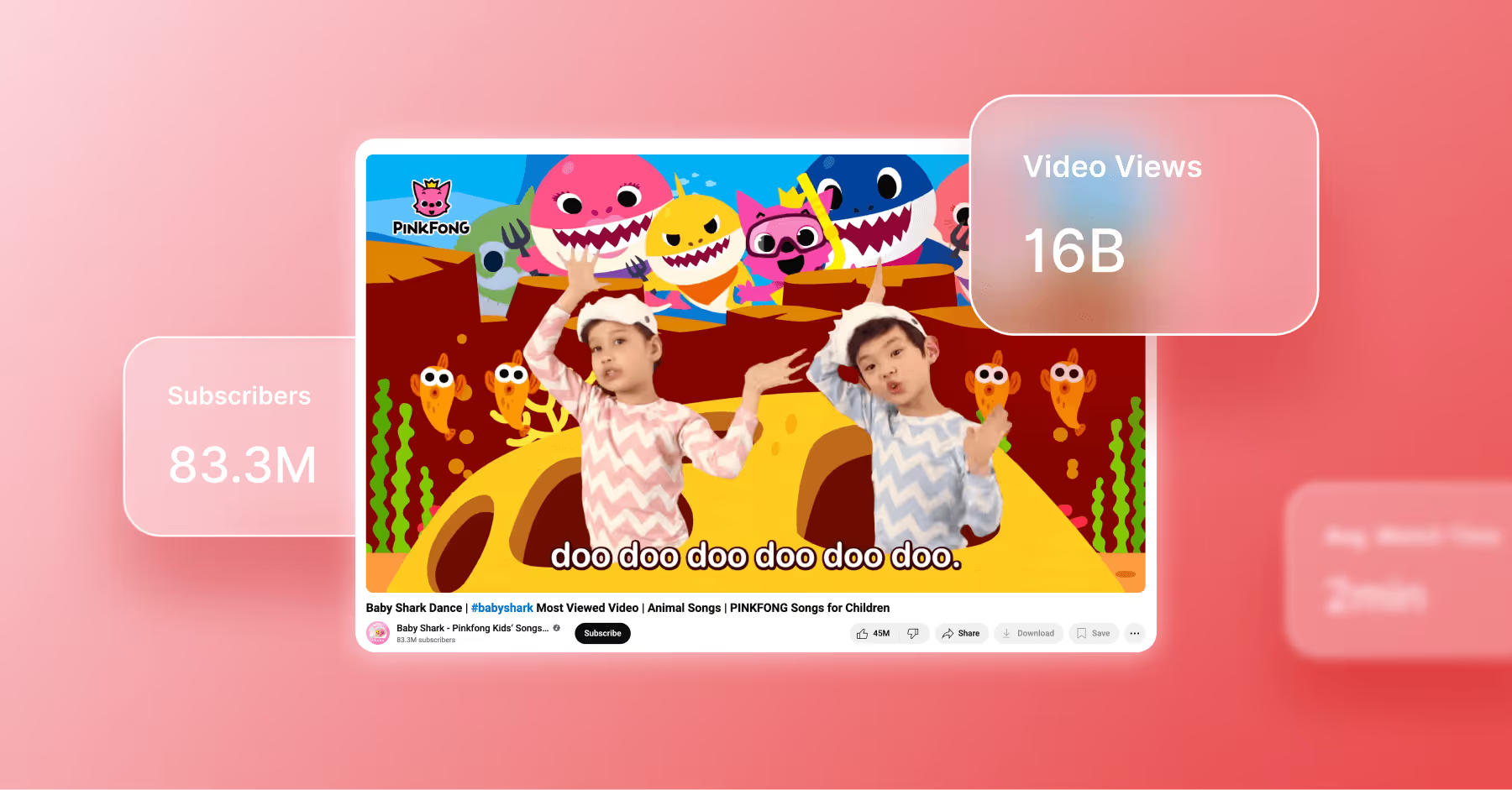
With over 2 billion logged-in users per month (and millions more watching without even signing in), YouTube is a royal palace where entertainment, education, and culture collide. In 2025, it’s not just about cat videos and reaction clips; YouTube is a full-on marketing machine.
YouTube statistics help tell a story of what works, what doesn’t, and where your brand should show up next. And this is why marketers should care about YouTube stats. Whether it’s audience demographics, watch-time habits, or trends in short-form vs. long-form videos, these stats aren’t just “nice-to-know”, they’re the cheat codes that can help you grow faster, smarter, and with far more reach and impact.
Think of YouTube stats as a map. They show what your audience binge-watches, how they interact with brands, and where the YouTube algorithm steers their attention. For marketers, understanding these numbers can be the difference between getting lost in the feed, and creating content people actually share.
TL;DR:
- YouTube remains a marketing powerhouse in 2025, with over 2 billion monthly users and engagement that rivals any other platform.
- The platform’s top performers, like MrBeast and Burger King, prove that storytelling, authenticity, and bold creative risks drive results.
- Audiences trust YouTube creators more than traditional ads, positioning influencer partnerships as a high-impact strategy.
- Long-form, binge-worthy, and educational videos are surging, giving brands more opportunities to build deeper viewer connections.
How YouTube Statistics Can Inform Your Strategy
Want a cheat code to understand your audience? Well, YouTube stats aren’t just boring data points, consider them hints to better understand your audience. In 2025, flying blind on YouTube is a hard pass. If you’re posting videos without peeking at the numbers behind them, you’re missing out on the kind of intel that could level-up your brand’s game.
Think about it: Statistics show you what’s a hit with your audience and what’s not, like those videos that don’t even make it past the skip button. With insights like watch time, audience retention, demographics, and even when your followers are online, you can craft video content that earns a rightful spot in their feed.
For brands, this means you’re not just throwing metaphorical spaghetti at the wall to see what sticks. You can use stats to:
- Spot content trends early (and ride the wave before it fizzles).
- Learn what type of storytelling keeps viewers hooked until the end.
- Refine your posting schedule to drop content when your audience is most active.
- Compare performance across campaigns and double down on what actually drives results.
At the end of the day, YouTube stats are your marketing GPS. They help you avoid dead ends, find paths that actively avoid noise, and make sure your content works toward building awareness, engagement, and conversions.
YouTube Usage Statistics
YouTube is a marketing powerhouse with billions of eyeballs watching, clicking, and engaging daily. For brands, staying on top of the latest YouTube stats is your ticket to understanding how audiences behave and how your brand can thrive in 2025.
Here are six usage stats that prove just how massive YouTube is, and what they mean for your strategy:
1. Baby Shark Is the Most Viewed YouTube Video
With over 14 billion views (yes, billion!), “Baby Shark Dance” is the reigning champion of YouTube. The secret? Universal appeal, catchy repetition, and kid-friendly content that keeps people watching again (and again…and again). For marketers, this is a reminder that simplicity and shareability will give you viral magic. You don’t need flashy production to win big, just content that connects across audiences.
Brand takeaway → The 14-billion-view success of “Baby Shark Dance” proves that simple, repeatable, and universally relatable content can drive massive engagement. Brands should focus on creating easily shareable videos that resonate across age groups over high-budget production.
2. Mr. Beast Is the Most Subscribed to YouTube Channel
With over 300 million subscribers, MrBeast has officially cracked the YouTube growth code. His formula? Wild stunts, massive giveaways, and content that’s impossible not to click. But here’s the kicker: his success isn’t just about money; it’s the balance between storytelling that emotionally resonates with viewers and exciting challenges that hook you in. Ultimately, viewers trust him because he reinvests in his community.
Brand takeaway → Brands can steal this playbook by thinking big, delivering value, and showing heart.
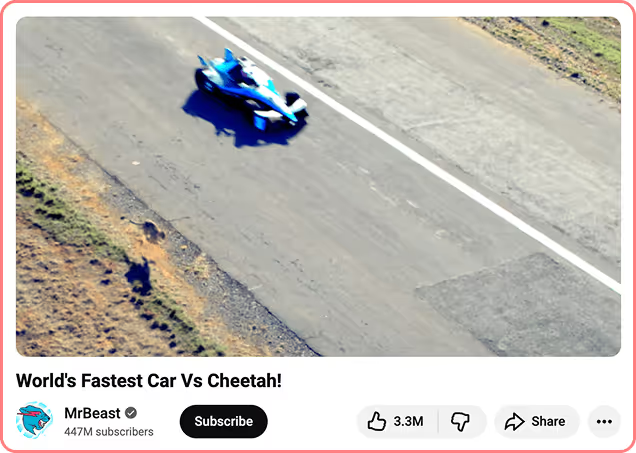
3. Users Spend an Average of 19 Minutes on YouTube Daily
The average viewer spends around 19 minutes and 39 seconds each day on YouTube. That’s nearly 20 minutes of undivided attention (a lifetime in internet terms). This proves YouTube isn’t just background noise, it’s an intentional part of people’s daily media diet.
Brand takeaway → This is a golden window to show up with recurring binge-worthy, educational, or entertaining content that earns its spot in someone’s routine.
4. 70% of Watch Time Comes From Algorithm-Recommended Videos
Here’s the stat that should make every marketer perk up: 70% of YouTube watch time comes from recommended videos, not direct searches. This means if you can get on YouTube’s “good side,” your content can snowball into millions of views without paid promotion.
Brand takeaway → The key to boosting watch time is to optimize your videos and profile for engagement signals (likes, comments, retention) and post consistently, so the algorithm knows you’re worth pushing.
5. YouTube Is the Second-Largest Search Engine
YouTube is more than a social platform, it’s the world’s second-largest search engine after Google. That means your content doesn’t just live on YouTube, it becomes searchable knowledge across traditional search engines like Google, and even LLMs like ChatGPT.
Brand takeaway → Implement a YouTube SEO strategy: Use the right keywords, titles, and descriptions so people can actually find you when they search for content or solutions. A well-optimized video also increases your chances of showing up in Google’s ‘Video’ tab, giving audiences another avenue to discover your brand and its content.
6. Burger King Is the Top-Viewed Brand on YouTube
Fast food meets fast views. Burger King is currently the most-watched food brand on YouTube, thanks to bold campaigns and comments that lean into humor, storytelling, and creative risks. Their success shows that taking risks with content pays off because audiences reward originality and entertainment. Brands in every sector can learn from this by stepping outside safe formulas and building content people actually want to share.
Brand takeaway → Playing it safe won’t cut it. Big ideas, bold branding, and memorable storytelling win the YouTube game.
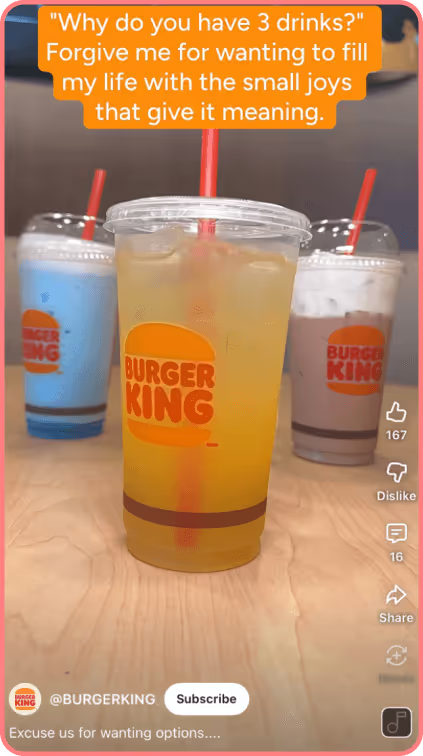
7. Average Watch Time per Video Is Up 121% for On-Demand Videos
On-demand videos aren’t just trending, they’re exploding. Average watch time per video has skyrocketed 121%, proving audiences want longer, more in-depth content they can watch on their terms.
Brand takeaway → This is your cue to go deeper, not shorter: Tutorials, behind-the-scenes, and storytelling formats thrive because people want to binge. YouTube offers longform content uploads in a way most social platforms don’t, so don’t be afraid to experiment with
From baby sharks to binge-worthy on-demand videos, YouTube continues to dominate the attention economy. If YouTube isn’t already in your marketing toolkit, this is your sign to hit record.

How does your industry compare?
Compare your 2024 social media performance to competitors with our latest Social Media Benchmarks.
Read The Social Media BenchmarksYouTube Demographics Statistics
Before you start cranking out content, it’s essential to know who’s actually watching YouTube and how they use the platform. Spoiler: It’s not just teens binging reaction videos at 2 AM (though, that’s definitely part of it). YouTube has become a truly global platform that shapes how audiences everywhere consume content.
Here are five demographic stats that’ll help you understand the YouTube crowd:
1. Saudi Arabia Has the Highest YouTube Penetration
With an insane 98.7% penetration rate, Saudi Arabia tops the charts for YouTube usage. That’s basically everyone in the country on YouTube.
Brand takeaway → If your brand is going global, remember that markets outside North America and Europe are massive opportunities.
2. YouTube Is the Second-Most Popular Social Media Network
YouTube sits right behind Facebook but way ahead of TikTok, Instagram, and Snapchat.
Brand takeaway → If you’re not active on YouTube, you’re missing the party where almost the entire internet hangs out.
3. Over 50% of YouTube Users Are Men
YouTube’s audience skews slightly male, with 54.4% men vs. 45.6% women. While that’s a pretty even split, it matters for brands running targeted campaigns, especially in niches like gaming, tech, and finance, where male viewers dominate.
Brand takeaway → Familiarize yourself with the demographics that make up your viewership.
4. Ages 25–44 Are the Most Prominent Group of YouTube Users
The 25–44 age group makes up over 40% of YouTube’s audience, aka your millennials and elder Gen Zers. This demo has buying power, brand loyalty, and loves bingeable long-form content. If you’re aiming for conversions, this is your golden age bracket.
chaBrand takeaway → Lean into content with a bit more depth than you can provide on TikTok. Look at brand series like Vogue’s ‘What’s In My Bag’ series or Wired’s ‘Internet’s most-asked questions’ series for inspiration on a long-form series that makes sense for your brand and your audience.
5. 12,000 Hours of Video Content Are Uploaded to YouTube Daily
Yep, you read that right: 12,000 hours of new content drops every single day. That’s both exciting and intimidating. For brands, it means two things: First, competition is fierce, but second, fresh, consistent and high-quality uploads can help you stand out in the sea of content.
Brand takeaway → Success comes from a consistent publishing cadence paired with polished, audience-relevant videos that signal quality and keep viewers coming back.
Understanding YouTube’s demographics helps you fine-tune your content strategy, from targeting the right age group to choosing the right global markets. The bottom line? Know your audience, then serve them content they actually want to watch.
YouTube Advertising Statistics
If YouTube usage stats prove that audiences are hooked, then ad stats show where brands are cashing in. From billion-dollar revenues to ad formats that actually work, these numbers highlight why YouTube is the place for marketers to flex their strategy.
Here’s what the ad world looks like on YouTube right now:
1. YouTube Made $14.5 Billion From Subscriptions in 2024
YouTube isn’t just raking in ad dollars: Subscriptions are big business too. In 2024 alone, YouTube made $14.5 billion from services like YouTube Premium and Music. For brands, this signals that audiences are willing to pay for ad-free, high-quality experiences, which means your organic content and ads have to feel just as valuable. Subscription revenue also reinforces YouTube’s long-term stability, making it a channel worth serious investment.
Brand takeaway → Subscriptions lead to more ad-free users. Media and publishing brands should focus on searchability and longevity.
2. YouTube Ads Are More Effective With Intent Targeting Versus Demographic Targeting
Demographics are an important part of any social media strategy, but intent reigns supreme. YouTube found that ads targeted by intent (what users expect to see) drive 100% higher lift in purchase intent compared to plain demographic targeting. For brands, this means keyword and search-based strategies should be at the core of YouTube campaigns. Reaching users in their ‘ready-to-buy’ moments gives you a direct path to conversions.
Brand takeaway → Don’t just target “18–24-year-olds.” Target what they want right now. That’s how you show up at the perfect moment.
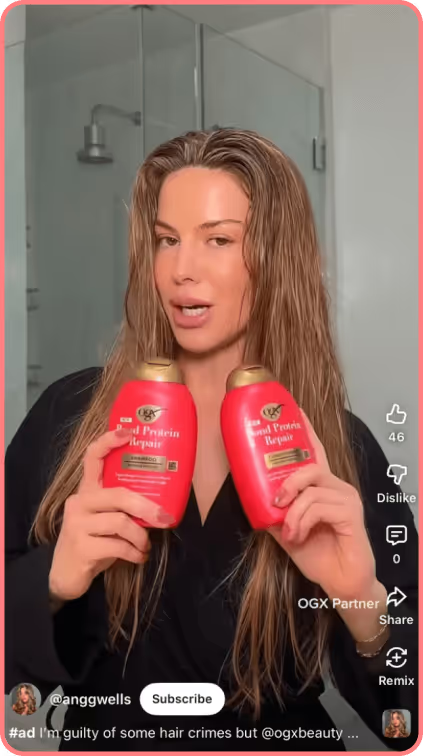
3. YouTube’s Worldwide Advertising Revenue Was $8.92 Billion
In just one quarter, YouTube pulled in nearly $9 billion from ads. That’s a whole lot of brands betting and winning on YouTube. It shows the platform is not just growing, it’s thriving, even as competition for attention intensifies. For brands, it’s proof that ad dollars invested here aren’t just safe, they’re strategic.
Brand takeaway → With that much ad money flowing in, competition is fierce. If you’re running ads, you’ll need thumb-stopping creative and smart targeting to stand out.
4. Skippable Ads Are Considered Most Effective Among Marketers
It likely comes as no surprise, but people love the option to skip. Marketers agree that skippable ads outperform other formats, not because people always watch them, but because when they choose to watch, engagement skyrockets.
Brand takeaway → Respect the skip. Hook your audience in the first 5 seconds with a bold opening or risk losing them.
YouTube Marketing Statistics
YouTube is a marketing playground where brands can build trust, engage audiences, and drive real results. Understanding the numbers behind the platform can give marketers the upper hand, from knowing how long to make videos to understanding audience trust and revenue potential.
Let’s break down some YouTube marketing statistics marketers should know:
1. The Maximum Video Length Upload is 12 Hours
YouTube allows uploads up to 12 hours long. While not every brand needs to create a mini-series, this stat highlights the potential for deep-dive content like tutorials, webinars, or behind-the-scenes storytelling. The platform is flexible, so brands can experiment with long-form content that keeps viewers hooked for extended periods.
Brand takeaway → YouTube’s 12-hour upload limit gives brands room to test. Try A/B testing to determine which lengths perform best, and repurpose content into bite-sized pieces so you can see which platforms your content performs best on.
2. YouTube Generated $36.1 Billion in Revenue in 2024
YouTube generated $36.1 billion in revenue in 2024, a 14.6% year-over-year increase. From ad revenue to premium subscriptions, YouTube’s massive financial footprint proves it’s a lucrative ecosystem for brands. Investing in YouTube marketing isn’t optional; it’s a chance to reach billions while riding a platform that keeps growing.
Brand takeaway → Brands should treat the platform as a core channel, allocating ad spend to YouTube campaigns while pairing it with consistent organic content to capture conversion opportunities.
3. 87% of Viewers Say They Trust YouTube Creators
Audiences trust creators more than traditional ads, making YouTube a perfect spot for influencer partnerships and branded content. According to Google, 87% of viewers trust YouTube creator recommendations. This stat proves that authenticity sells, and brands can leverage trusted voices to amplify their message and drive real engagement.
Brand takeaway → Look for opportunities to partner with UGC creators to provide authentic recommendations based on your product or service. This could range from physical products to TV shows or movie recommendations for entertainment industry brands.
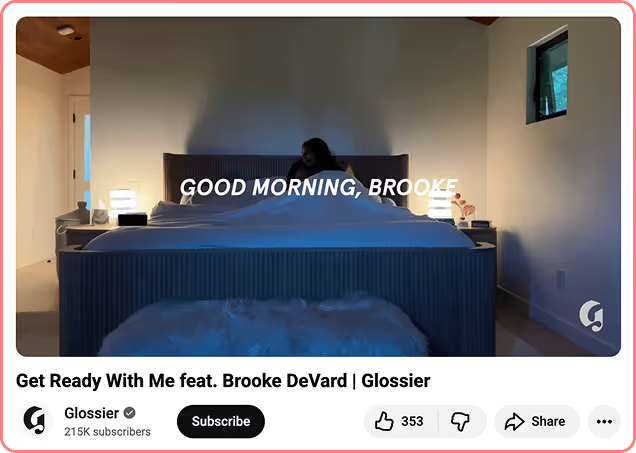
4. 68% of Marketers Plan To Start Video Marketing in 2025
Video is no longer optional for brands, with 68% of marketers hopping on board with video in 2025. Whether it’s short-form clips, tutorials, or livestreams, video content is the key to grabbing attention and building a lasting connection with audiences.
Brand takeaway → If you’re not already invested in social media video, brands should incorporate plans for video content in their 2026 strategy.
5. YouTube Channels Primarily Focused on Affiliate Promotions See a 30% Higher Unsubscribe Rate
Audiences can smell a sales pitch from a mile away, and channels that only push affiliate links see 30% more unsubscribes. People don't want to feel like they're just being sold to, they want value. When your content focuses on education, storytelling, or entertainment first, you earn trust that naturally leads to conversions. Balance promotion with authenticity, and your audience will stick around for the long haul.
Brand takeaway → Brands need value-first content that entertains or educates before asking for conversions.
YouTube Statistic FAQs
How many views do YouTube Shorts get daily?
Short-form is taking over, and YouTube Shorts are getting billions of daily views. Audiences are loving these quick, scrollable clips, making Shorts a must for brands wanting fast engagement and viral reach. If you’re not posting Shorts yet, your content might just be missing out on the hype wave.
Which countries have the most YouTube users?
YouTube is truly global. The top countries by users include the United States, India, and Brazil, but it’s safe to say almost every corner of the planet has a YouTube fan. Brands can use this to localize content or test global campaigns with incredible reach.
What is YouTube’s advertising reach in 2025?
YouTube’s ad network is huge, which means your brand can target audiences with precision ads, discovery campaigns, and retargeting on a platform people already trust for entertainment, tutorials and information.
How is YouTube changing content discovery?
YouTube’s algorithm is smarter than ever, recommending content based on what users watch, like, and share. 70% of watch time comes from algorithm-driven recommendations, so it’s all about engagement, watch time and consistency. Brands can ride this wave by creating binge-worthy, sticky content that keeps viewers watching.




